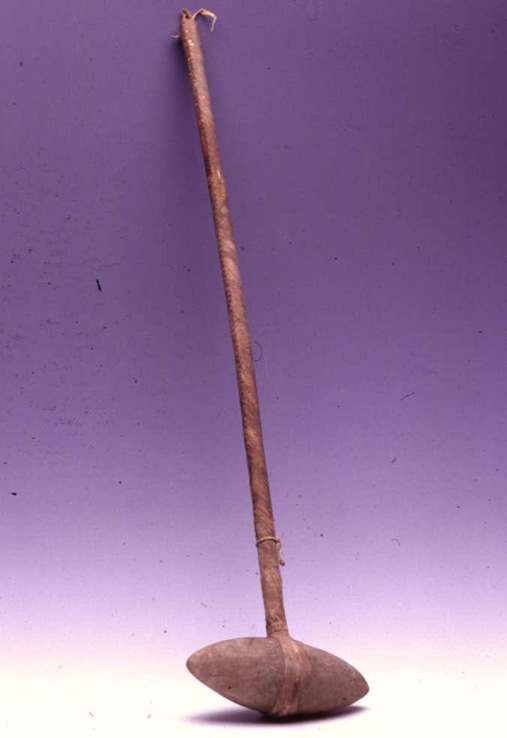
Click here to view image
Technique and Dimensions:
Polished siliceous stone, dehusked wood, tanned leather
Back to Focus:
Two-pointed battle mace (commonly called "skull-splitter"); it was used in hand-to-hand combat even after the appearance of firearms, as a symbol of bravery and bravery.
Polished silica stone, decorticated wood, tanned leather applied still wet because drying contracts forming a single body between stone and handle




